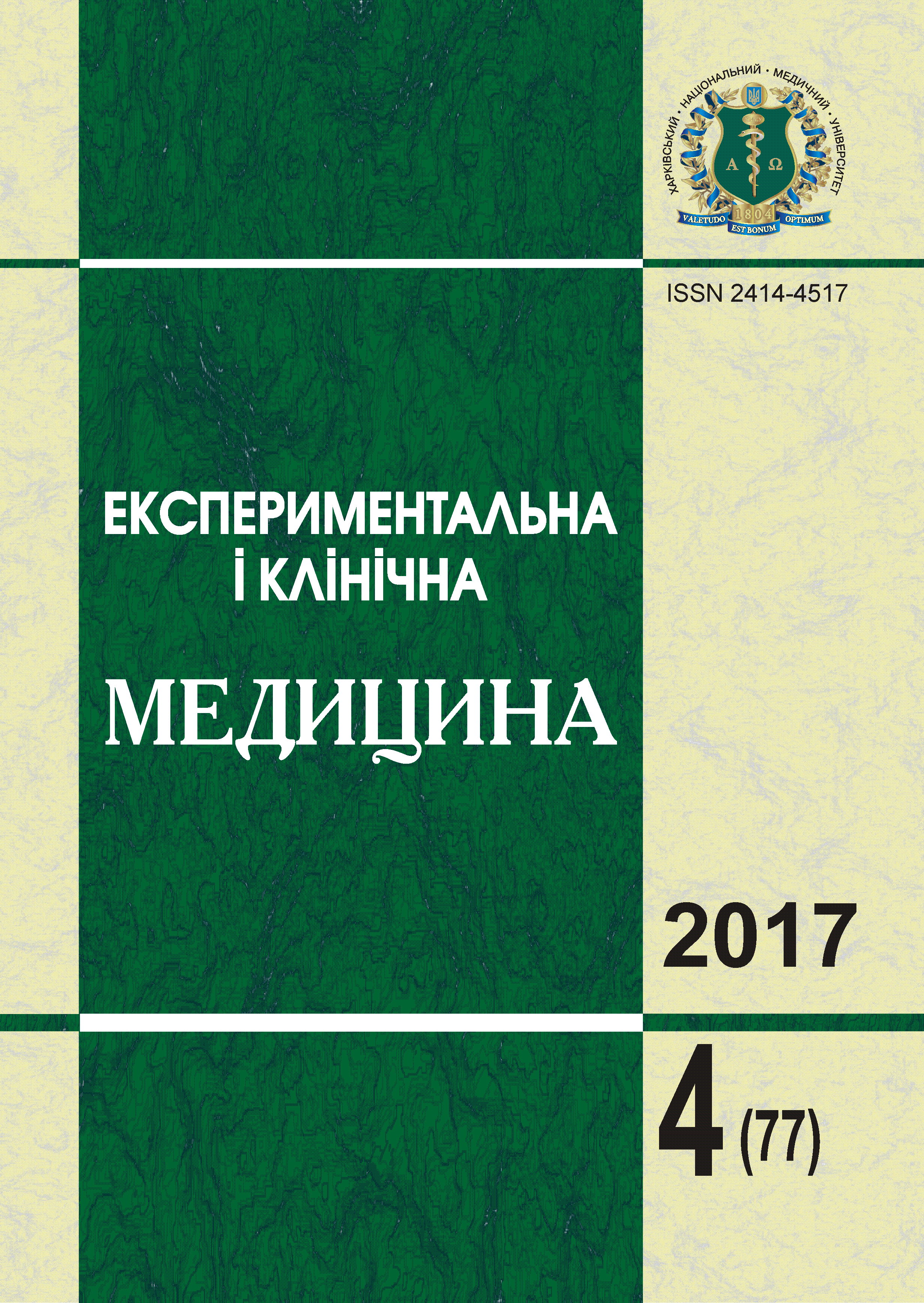Abstract
The study involved screening of 230 newborns in the early neonatal period, 125 of whom were prematurely born (main group) at gestational age of 26-37 weeks and 105 healthy full-term newborns (control group) in order to improve the criteria for a differential approach to diagnosing the patent foramen ovale (PFO) and congenital heart disease – secondary atrial septal defect. The study showed that gender differences, the presence of the open arterial duct and atrial septal aneurysm had no significant effect on the period of spontaneous closure of the PFO (p>0.05). After the first year of life, the incidence of spontaneous closure of PFO in full-term infants is 68.7%, in pre-term infants – 34.4%. Anatomic closure of PFO in full-term infants occurs in the first year of life (9.5±3.6, p≤0.05 months); in the majority of pre-term infants during the second year of life (14.3±2.6 months). The study showed that clinical and instrumental data (the size of the defect in the oval fossa region, its hemodynamic development, changes in the heart chambers, 2nd degree tricuspid regurgitation), as well as the presence of GG genotype of polymorphism of β1-adrenoreceptor gene in combination with bradycardia and a decrease in the pulsation index in the great vessels of the brain (anterior cerebral and/or medial cerebral arteries) may be additional criteria for differential diagnosis of the patent foramen ovale and atrial septal defect.References
Frank E. Silvestry, Meryl S. Cohen, Laurie B. Armsby, Nitin J. Burkule, Craig E. Fleishman, Ziyad M. Hijazi, Roberto M. Lang, Jonathan J. Rome, Yan Wang (2015). Guidelines for the Echocardiographic Assessment of Atrial Septal Defect and Patent Foramen Ovale: From the American Society of Echocardiography and Society for Cardiac Angiography and Interventions. J. Am. Soc. Echocardiogr. 28: 910–958.
Oh Young Banga, Mi Ji Leea, Sookyung Ryooa, Suk Jae Kima, Ji Won Kim (2015). Patent Foramen Ovale and Stroke–Current Status. // J. Stroke. 17 (3): 229–237. doi: https://doi.org/10.5853/jos.2015.17.3.229.
Stefan Buchholz, Ayesha Shakil, Gemma A Figtree, Peter S Hansen, Ravinay Bhindi (2012). Diagnosis and management of patent foramen ovale. Postgrad Med J. 88: 217–225. doi: 10.1136/postgradmedj-2011-130368.
Shan Guo, Ingram Roberts, Jose Missri (2007). Paradoxical embolism, deep vein thrombosis, pulmonary embolism in a patient with patent foramen ovale: a case report. J. Med. Case Reports. 1: 104. doi: 10.1186/1752-1947-1-104.
Ramineni R, Daniel G.K. (2010). Association of a patent foramen ovale with myocardial infarction and pulmonary emboli in a peripartum woman. Am. J. Med. Sci. Oct; 340 (4): 326–328. doi: 10.1097/MAJ.0b013e3181e732b2.
DeSimone C.V., DeSimone D.C., Hagler D.J., Friedman P.A., Asirvatham S.J. (2013). Cardioembolic stroke in patients with patent foramen ovale and implanted cardiac leads. Pacing Clin Electrophysiol. 36: 50.
Thaler D.E., Ruthazer R., Weimar C., Mas J.L., Serena J., Di Angelantonio E., Papetti F., Homma S., Mattle H.P., Nedeltchev K., Mono M.L., Jaigobin C., Michel P., Elkind M.S., Di Tullio M.R., Lutz J.S., Griffith J., Kent D.M. (2014). Recurrent stroke predictors differ in medically treated patients with pathogenic vs. other PFOs. Neurology. 83: 221.
Kuzhel D.A., Matiushin G.V., Savchenko E.A. (2014). Voprosy diagnostiki otkrytogo ovalnogo okna. Sibirskoe meditsinskoe obozrenie, 1: 70–75.
Gianluca Rigatelli (2014). Should we consider patent foramen ovale and secundum atrial septal defect as different steps of a single anatomo-clinical continuum? J. Geriatr. Cardiol. Sep; 11 (3): 177–179. doi: 10.11909/j.issn.1671-5411.2014.03.004.
Shunichi Homma, Ralph L. Sacco (2005). Patent Foramen Ovale and Stroke. Сontemporary reviews in cardiovascular medicine / Circulation. 112: 1063–1072. https://doi.org/10.1161/CIRCULATIONAHA.104.524371.
Ali Yildirim, Alperen Aydin, Tevfik Demir, Fatma Aydin, Birsen Ucar, Zubeyir Kilic (2016). Echocardiographic Follow-Up of Patent Foramen Ovale and the Factors Affecting Spontaneous Closure. Acta Cardiolю Sin. Nov; 32 (6): 731–737. doi: 10.6515/ACS20160205A.
Willem P. de Boode, Yogen Singh, Samir Gupta, Topun Austin, Kajsa Bohlin, Eugene Dempsey, Alan Groves, Beate Horsberg Eriksen, David van Laere, Zoltan Molnar, Eirik Nestaas, Sheryle Rogerson, Ulf Schubert, Cécile Tissot, Robin van der Lee, Bart van Overmeire, Afif El-Khuffash (2016). Recommendations for neonatologist performed echocardiography in Europe: Consensus Statement endorsed by European Society for Paediatric Research (ESPR) and European Society for Neonatology (ESN). Pediatric Research. 80. 4: 465–471
Rybakova M.K., Alekhin M.N., Mit'kov V.V. (2008). Prakticheskoe rukovodstvo po ul'trazvukovoi diahnostike. Ekhokardiohrafiia. 2 izd., ispr. i dop. M.: Izdatel'skii dom Vidar. M. 512 s.
Sharykin A.S. (2009). Vrozhdennye poroki serdtsa. Rukovodstvo dlia pediatrov, kardiolohov, neonatolohov. 2 izd. M.: BINOM: 111–122.
Shivadeep S., Anandaraja S., Devi Jansirani D. (2015). An Embryological Remnant – A Case Report and Review. Int. J. Clin. Cardiol. 2: 3.
Devi Jansirani D. Shiva Deep S., Anandaraja S. (2015). Anatomical Study of Chiari Network and the Remnant of Left Venous Valve in the Interior of Right Atrium Anat Res Int. 2015: 247680. doi: 10.1155/2015/247680.
Nieminen T., Lehtimäki T., Laiho J., Rontu R., Niemelä K., Kööbi T., Lehtinen R., Viik J., Turjanmaa V., Kähönen M. (2006). Effects of polymorphisms in β1¬adrenoceptor and α-subunit of G protein on heart rate and blood pressure during exercise test. The Finnish Cardiovascular Study. J. Applied Physiology. 100 (2): 507–511.
Babenko A.Yu., Kostareva A.A., Hryneva E.N., Savytskaya D.A., Solntsev V.N. (2014). Vklad rasprostranennykh odnonukleotidnukh polymorfizmov hena β1-adrenoretseptora v izmeneniia, proiskhodiashchie v serdechno-sosudistoi sisteme pri tireotoksikoze. Klinicheskaia i eksperimental'naia tireoidolohiia, 10, 2: 22–31. DOI: 10.14341/ket2014222-31.
Mutaf'yan O.A. (2005). Poroki i malyie anomalii serdtsa u detei i podrostkov: uch. metod. posobie. Pb., 93 s.
